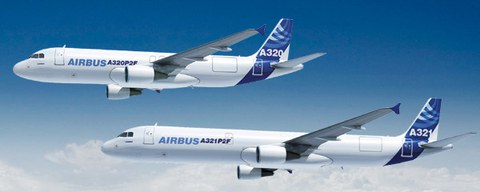Network analysis P2F
The assessment of economic effects that would arise from the introduction of A320 freighters into existing or future fleets is an essential part of the customer support provided by Airbus Freighter Conversion GmbH (AFC) under the A320/A321P2F (Passenger to Freighter) programme. This assessment is usually based on customer-specific transport network characteristics. The analysis of the respective networks allows quantitative statements to be made to increase economic efficiency, whereby essential flight performance parameters and transport characteristics (payload-range) of the converted A320 as well as the competing aircraft type are taken into account.
With the fleet & network analysis tool for the A320/321 P2F types, the aim is to provide a tool for the product marketing of conversions of the A320 family from passenger to cargo aircraft carried out in Dresden, which maps the use of A320 and A321 freighters in a specific network of a cargo airline. This enables Airbus Freighter Conversion to transfer the customer-specific network structure, fleet composition, current flight plan and expected freight volume into the tool and to provide the customer with an objective evaluation of the economic effects by means of a cost-benefit analysis.
Fleet composition and freight volume are defined as variables. The reference for the fleet composition is the current fleet of the cargo airline to be investigated. There are options to replace individual aircraft of the fleet (replacement), to extend the existing fleet (extension) or to set up a completely new fleet (new) with the aim of objectively comparing these modified fleet compositions with the reference fleet. The scenarios to be simulated take into account the air freight volume over a period of 10 to 20 years. The necessary route network model is linked to a flight profile model, which in turn is linked to a specific cost function. This link enables an analysis of the defined network structure and fleet composition of the cargo airline to be investigated. With the results of the reference fleet and the variation of the fleet (Replacement, Extension or New) a comparison of the fleet compositions takes place. With a minimum number of aircraft, the aim is to increase revenue and reduce the costs of the transport system. The costs incurred are composed of a) price-related costs [e.g. depreciation, interest or insurance], b) flight-related costs [e.g. fuel costs, landing fees, ANSP costs, crew costs or handling] and c) maintenance costs. The A320 & A321 P2F fleet & network analysis tool focuses on determining the payback period of the investment sum over a long-term period of 10 to 20 years and the creation of a resource-optimised flight plan.
| Customer: | Airbus Freighter Conversion GmbH (AFC) |

